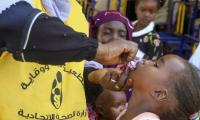ISLAMABAD: The government has worked out an apparently doable and unique strategy under which it will dole out 30 per cent equity of the Ghazi Barotha Hydropower Project (GBHPP) to generate $700-800 million for financing the Diamer-Bhasha Dam.
To this effect, the chief of army staff has been sensitized, who asked the Special Investment Facilitation Council (SIFC) to take up this plan for positive consultations between stakeholder entities. The equity will be sold out to potential investors from friendly countries for 10 years, top officials told The News.
“The divestment of 30 per cent equity of the Ghazi Barotha Hydropower Project would be based on profit sharing basis,” official sources said, adding that the caretaker federal minister for water resources earlier briefed the chief of army staff about the divestment of 30 per cent equity plan of GBHPP worked out by the Technical Wing of Water Resources Ministry. He appreciated the plan and its proposed execution and asked the SIFC to start consultations on this unique plan with the Power Division, Finance Division and NEPRA.
The Ghazi Barotha Hydropower Project is the golden goose as it continues to generate electricity in the summer and winter seasons with an average hydro generation of 800 MW. The project has the capacity to generate 1,450 MW and generates 1,450 MW in the summer, but in the winter, the generation of electricity fluctuates depending upon water flows in the Indus River downstream of Tarbela Dam. However, during the peak time in the ongoing winter season for four hours, the project still generates 1,450 MW.
The GBHPP produces 6.7 billion units in a year and the government would sell out electricity directly to the export industry of the country under the CTBCM model 450 MW, which is 30 per cent of the total hydro generation of the project. This is how this would be the pilot project that will provide electricity to the export industry by using the transmission and distribution system of NTDC and relevant DISCOs. This will reduce the current tariff of export industry manifold that will help reduce the input cost of the industry and boost exports of the country.
The tariff for the Ghazi Barotha hydropower project currently stands at Rs1.25 per unit, but the Water and Resources Ministry wants the NEPRA to increase its tariff to Rs10 per unit as a base tariff for 30 per cent generation of the project; it is enough to generate ample attraction to potential investors from friendly countries i.e. Qatar, Kuwait, UAE and Saudi Arabia. If the regulator increases its tariff up to Rs10 per unit, the 30 per cent equity would generate $700-800 million and if it increases to Rs20-25 per unit, doling out the 30 per cent equity would fetch $1.6-1.8 billion.
However, under the plan, the authorities want the NEPRA to increase the base tariff of 30 per cent generation of the GBHPP up to Rs10 per unit. After that the government would hold competitive bidding between export sector players seeking tariff rates above Rs10 per unit. If it gets implemented, it will be a win-win situation both for the export industry and Ghazi Barotha Hydropower Project management and foreign investors.
However, the Power Division showed reluctance to the proposal during the consultation process, arguing that the export industry was providing a massive cross-subsidy to residential and agriculture consumers at about Rs10.85 per unit under the current tariff regime, which will come to an end if the said plan is implemented under the CTBCM model. More importantly, NTDC is seeking wheeling charges or transportation charges of electricity at Rs27 per unit and that is meant to fail the CTBCM model.
Members of both groups used automatic weapons against each other
Sensitization operation is being conducted in area to eliminate any other terrorist found in area
PPP chief offered condolences to Larkana Hindu Panchayat Chairman, Vice Chairman and Mukhi over Sanjay Kumar’s murder
Maryam Nawaz directed to ensure proper seating arrangements and fans in waiting areas
Emir of Qatar warmly reciprocated prime minister’s Eid greetings and conveyed his best wishes for people of Pakistan
KP govt ordered high-level inquiry into incident and announced compensation of Rs5m for each victim of drone attack







